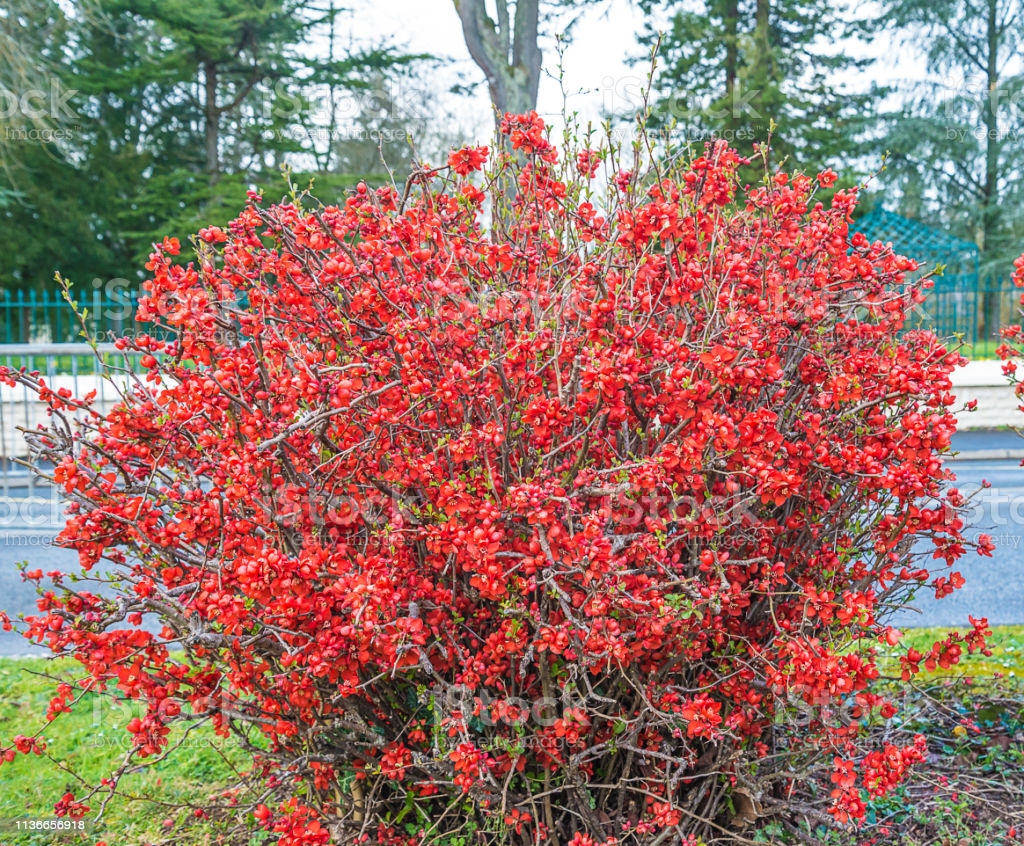Chaenomeles flowers are known as deciduous shrubs along with multiple stems shrubs. This flowering plant has a messy growing habit. Interestingly these flowers grow in beautiful colours such as pink, red, white and orange. The foliage of this plant is shin and dark green. These flowers are very easy to grow due to flowering quince are ideal for borders and barrier decorations. This plant grows well in the cold months and it is very important to provide its roots with a moderate amount of water.
Scientific Name:
Chaenomeles speciosa
Common Names: Japanese quince and Maule’s quince are the other common names for this plant.
Hardiness zone: The hardy zone of this plant range from 4-8.
Height: The average height of this plant is 6-10 feet tall and wide.
Growing Time: The ideal time to grow these flowers in March to April.
Maintenance: Flowering Quince doesn’t demand any high care and maintenance.
Light: It is very significant to grow this plant in full sunlight. However, these flowers can manage to grow in partial sunlight but if this plant is placed in such a location that receives full sunlight it will grow flawlessly
Soil: Plant these flowering shrubs in properly drained soil for the best growing results. If the soil is alkaline rich it may cause various issues such as chlorosis. That’s why it is recommended to plant this tree in soil that has a PH range from neutral to slightly acidic. In addition to this, these flowers also grow easily in other types of soil such as sandy or Clay.
Water: Flowering Quince needs a normal amount of water. In addition to this, these flowers can tolerate drought conditions once they fully get developed. But it is very important to provide proper water to this flowering plant when it is in its growing stage. The ideal time to give water to Chaenomeles is morning time.
Temperature and Humidity:
For the propagation of flowering quince, it is very important to maintain its soil humidity and temperature. Once it grows to its fullest it can tolerate any range of temperature and humidity as well. This plant is a deciduous shrub that can tolerate cold hardiness zones and can manage to grow even at 25°F.
Fertilizer:The best fertilizer for flowering quince is slow-release fertilizer and all-purpose fertilizer. So you need to fertilize this plant at the beginning of the summer before the growth of new buds. It is recommended to carefully spread the fertilizer all around the soil and try to prevent foliage from this fertilization because it can damage this foliage. After spreading the fertilizer give water to this plant so that the fertilizer gently spread to roots.
Pruning: These flowers don’t need a lot of pruning. But if you want to do it you can do it immediately after the blooming I’d the flowers. It will encourage the upcoming buds to grow perfectly.
Common Pests/Diseases:
Some various pests and diseases can damage this plant such as:
- Fungal leaf spot is a common disease that may affect the leaves of flowering quince.
- Scab and firelight also sometimes infect this beautiful flowering plant.
- Due to the high alkaline soil, these flowers may face Chlorosis.
Frequently Asked Questions:
1.What is the common name of Chaenomeles?
This flower is commonly known as Flowering Quince.
2.Is flowering Quince is herb or Shrub?
This flowering plant is famous as a deciduous shrub.
3.What is the family of Chaenomeles flowers?
These flowers are a member of the Rosacea family.
4.Where did these flowers are widely found?
Flowering Quince is the first time originated in China and its various regions.
Conclusion: In a nutshell we can say that this plant is dense shrub along with twigs that are shiny and greyish brown. Each flower consist of five petals and each flower is approximately 2inches long. This flowering plant contains delicious yellow to green color fruit that is widely used to make jellies. Overall it is ideal for all type of gardens that why we highly recommend it.

